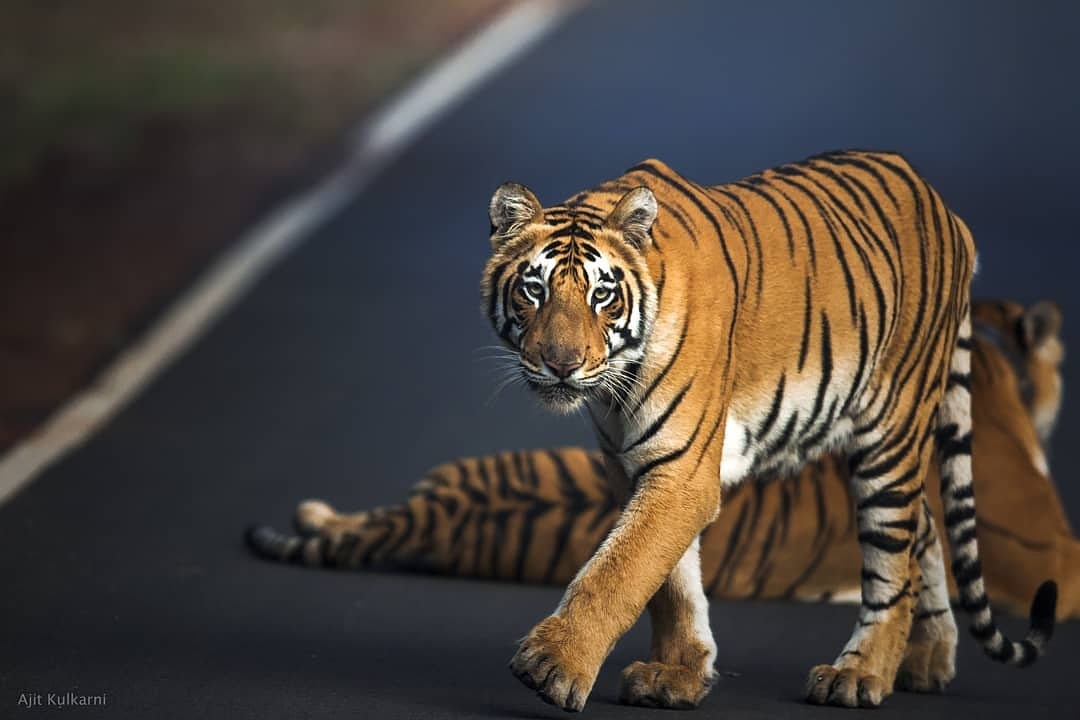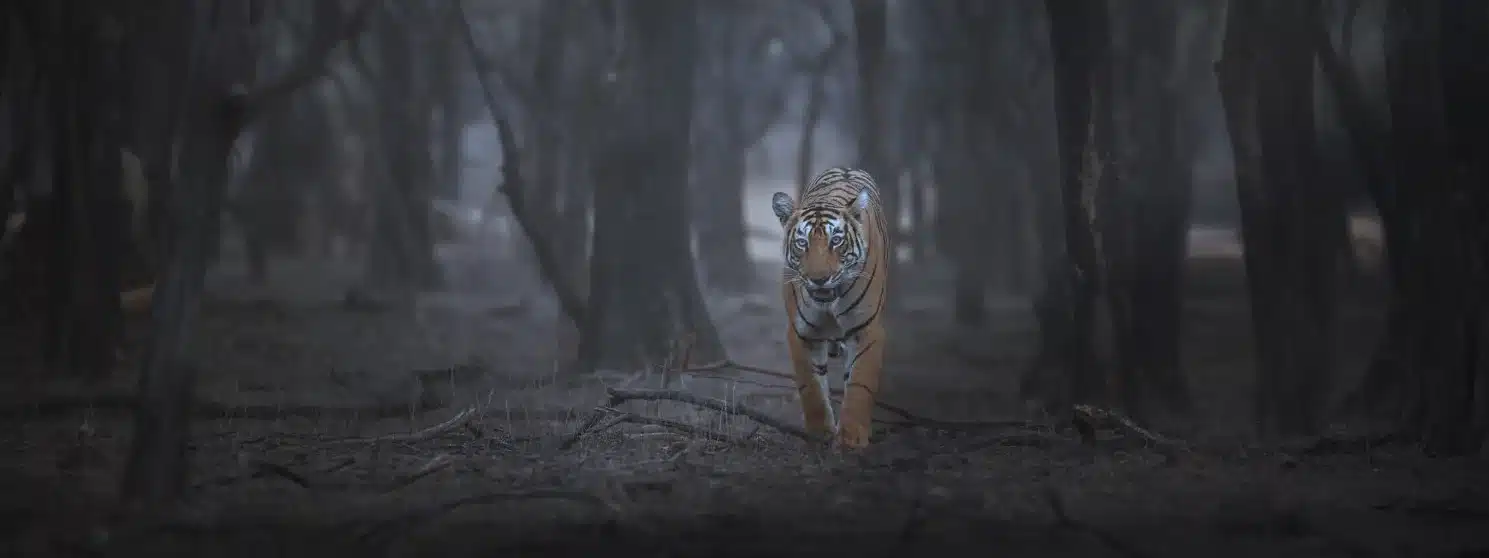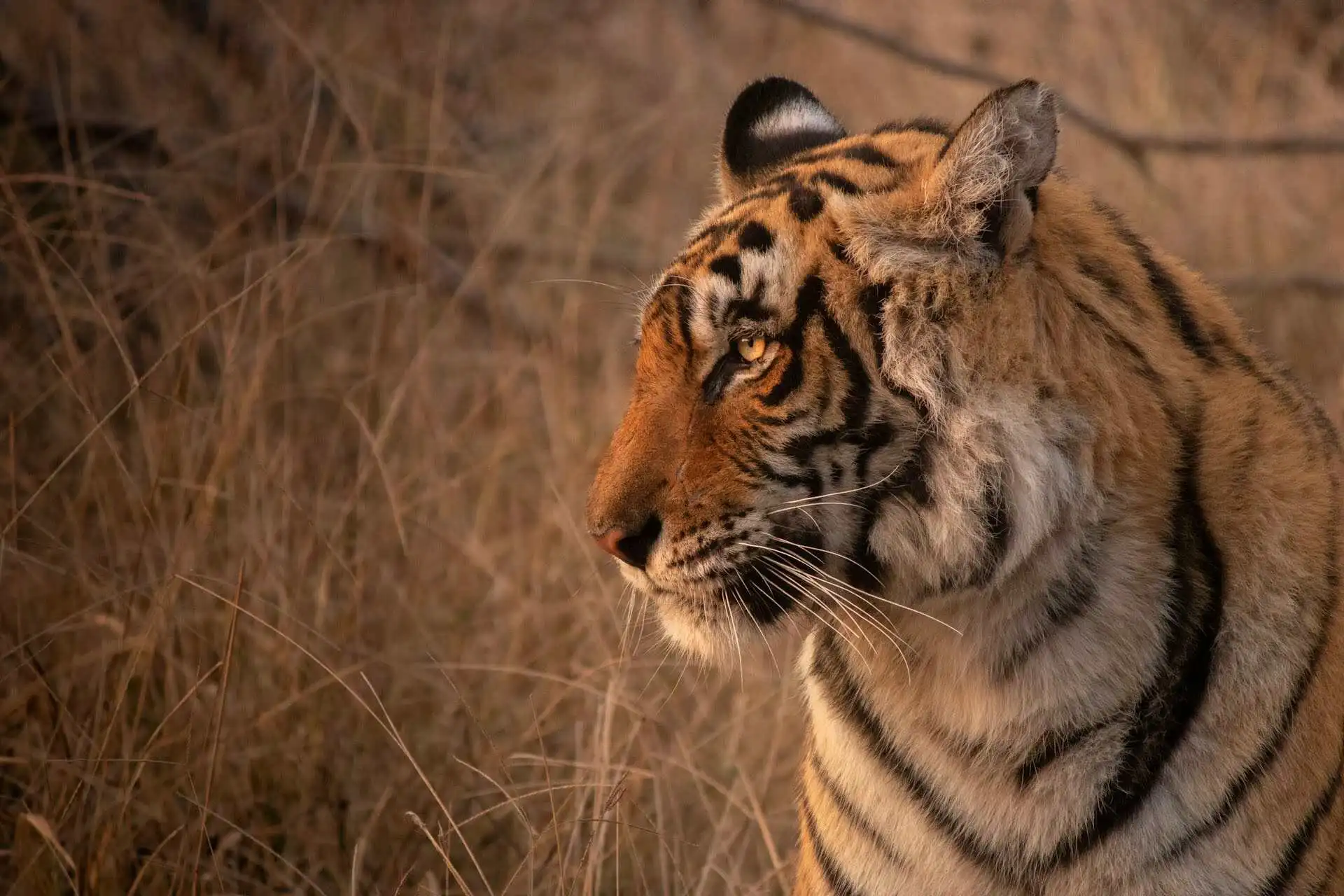Top 14 Big Cat Species in India - Popular & Biggest Wild Cats Fact
India, the only country in the world to have all the three prime members of the wild big cat family, India hosts almost 15 Big Cat Species. Out of these 15 types of big cats, The Lion, Tiger, and Leopard are the most popular and make India one of the major attractions for wildlife lovers across the globe. Lion, Tiger, and Leopards are the major big cats of India.
This blog article is concentrating to give more specific information about all the ‘top big cats‘ species. Below is the list of amazing big cats that you may spot in Top National Parks of India and other wildlife reservoirs.
Note- To book Big Cats Safari in India, Call/WhatsApp : +919822083308
Top Big Cat Species in India
-
- Lion (Asiatic Lion)
- Royal Bengal Tiger
- Leopard
- Black Panther
- Snow Leopard
- Clouded Leopard
- The Jungle Cat
- The Golden Cat
- Leopard Cat
- Marbled Cat
- Desert Cat
- The Lynx
- The Caracal
- Pallas Cat
Royal Bengal Tiger

Big Cat Royal Bengal Tiger, Img Credits @Ajit Kulkarni
Tiger usually adapts themselves to the climatic change easily and it is the most important reason they are found even in the foothills of the Himalayas along with the other part of the country. Himalayan tigers are usually large in size than the tigers found in central and southern India.
Generally, tigers have light yellow to orange coats with strips ranging from light brown to dark in color. The average weight of a male tiger is approx 265 KG where the average weight of female tigers is 140-165 kg.
This striped cat generally has an average lifespan of 20-25 years and during their lifespan, they may travel many 100 kilometers within the forest corridors and can give birth to 2 -3 cubs.
It is also the national animal of India and ranks among the biggest wild cats alive today, another reason this animal being so charismatic megafauna of the world.
Royal Bengal Tiger comes under Endangered status as per the IUCN Redlist. Project Tiger was launched in India in the year 1973 to conserve the tiger population in India.
Note- Explore Tiger Safari Packages or Booking Contact Call/WhatsApp: +91 9822083308
Popular Tiger Safari Packages in India
The Asiatic Lion

Asiatic Lion, Gir National Park
With the only country in the world to have Asiatic Lions in their natural habitat, India is the proud host of this Big Cat Species. The biological name of a lion is Panthera Leo. There are only two species of Lions in the existence now, i.e. The African lion and The Asiatic lion.
Forest of GIR is the only remaining habitat of this wonderful creature and it was not possible without the help of local people and forest officials that GIR has now more than 500 Asiatic lions as compared to only 18 Lions in 1893.
Lions generally live in pride ranging from 8 to 30 lions. Mostly, the female member of the pride hunt and satisfy the hunger of cubs and male lions of the pride.
An adult male weighs somewhere around 180 Kg as compare to 130 Kg adult female members of this big cat family.
Lions have been observed to mate around October – November and their gestation period is around 120 days. Once the cubs are born, the responsibility of the male lions is to protest the pride from threats and other male lions.
VIsit GIR forest to see this wonderful animal living in their natural habitat.
Indian Leopard

Indian Leopard, A species of Big Cat in India, @Samarth Sriram
Compared to the other member of the big cat species, Leopard has relatively small legs and an adult male can weigh up to 60 Kg and a female can weigh up to 38-40 kg.
The average lifespan of a Leopard is around 12-17 years. Leopard mates throughout the year. The gestation period of the leopard is 85-90 days and a female leopard can give birth to 2-4 cubs together.
Note- For Leopard Safari Packages or Booking Call/WhatsApp: +919822083308
Black Panther – Melanistic Leopard

Black Panther Animal – Big Cats India, Img @Shutter Arc Photography
Note- To book a Black Leopard Safari, Call/WhatsApp: +919822083308
Technically, Black Panther is the Leopard only, But because of a rare mutation called Melanism, They turn completely Black and they are called Melanistic Leopard or Black Panther or “The Ghost of the Forest”
Black Panther’s body characteristics are just similar to that of Leopard, It is just their color turn black because of Melanism.
Some amazing facts about Black Panthers
- Black Panthers are wonderful tree climbers
- Black Panthers have very good eyesight and they are very fast.
- They can run at a speed of 60 km/hr
- These big wild cats are great swimmers
- Black Panthers mates during monsoons only
- They can live up to 12-13 Years
- They have strong paws and sharp claws which they use in hunting mid sizes prey.
Click here to see the top places to see a Black Panther in India
Snow Leopard

Snow Leopard India, Img@Khushagra Gupta
Sitting on the verge of extension Snow Leopard is yet another beautiful creature found in India. Snow Leopard is found in the snow states of Jammu and Kashmir, Himachal Pradesh, Sikkim, and Arunachal Pradesh. Snow leopard prefers rocky terrain and steep to stay which helps them to sneak up on their prey from a height.
The snow leopard is smaller in size as compared to the other big cats and leopards. The standing height of snow leopard is approximately 2 ft and the average weight is between 35-55 kg.
The biological name of the Snow leopard is Panthera Uncia.
Where can you see a Snow Leopard in India?
This big cat species can be spotted in the below national parks of India or in our Snow Leopard Expedition in Spiti Valley or Ulley valley
- Hemis National Park
- Great Himalayan National Park
- Namdapha National Park
Clouded Leopard

Engendered Clouded Leopard, Img @Arvind Ayilliath
With the blotched pattern on their body, Clouded leopard is another beauty of the big cat family in India. The biological name is Neofelis Nebulosa.
Mostly found resting on a tree during the daylight, Clouded Leopard hunts during night time only. The clouded leopard is nocturnal and their low density & highly dense habitat makes it difficult to count clouded leopard in their habitat.
Characteristics wise Clouded Leopard are dark grey or ochreous in color with blotched patterns on their body. Usually small in size but carnivorous like the other big cat species. A male can weigh up to 23 kg and a female can weigh around 16 kg.
The Jungle Cat

Jungle Cat of India – Big Cats India
Also known as a reed cat or swamp cat, A jungle cat inhabits places with adequate water and dense vegetation. Jungle cat can be found in both higher altitude and plains as well.
They hunt throughout the day and small mammals, rodents and birds are its prey. Their sharp ears help them in pinpointing the prey.
They height nearly 12-14 inches and range from 2 to 16 kilograms. Jungle Cat become sexually mature when they are around a year old, their gestation period is two months and at a time they can give birth to two to three kitten.
The Golden Cat
Not many of us have heard about this Cat, but The Golden Cat is beautiful in its own kind. It is also referred to as ‘Asian Golden Cat‘ or ‘Asiatic Golden Cat’ or ‘Temminck’s Cat’; they have been kept hidden from the Human population, as they are being tagged as near endangered species.
We don’t know much about the cat, but years of study has revealed some of the facts about The Golden Cat.

Asian Golden Cat India
- They like to live in a dense tropical area.
- Golden Cats climb trees very rarely.
- They are of the size as the domestic cat and lives on birds, rodents, and reptiles.
- You won’t find them in groups, they like to travel alone and just meet the other cats for mating purpose.
- They are being researched as both fierce and tranquil.
- They are of some shade of Golden with striped heads, spotted coats, striped or spotted backs.
- The Golden Cats are primarily Noctural, but still, avoid any hunting activities at night.
- Golden Cats are found in Asian countries like Nepal, Bhutan, India, Vietnam, Malaysia etc.
The Leopard Cat

Leopard Cat – Big Cats India
Leopard Cat is also called as Prionailurus bengalensis, the cat is the size of the Domestic cat, with long legs. Its color varies according to the place. You can find the colour ranges from pale tawny to yellow, red or grey above.
At some places, they help the villagers to keep the rodents off.
Some facts about the Leopard Cat:
- Leopard Cats are most active in Night, Dawn and Dusk.
- They prey mostly on Rats.
- Leopard Cats can weigh around 1.7-7kg.
- They live to close rivers, and also climb trees for any hunting.
- They rest on trees and for hiding use dense thorny undergrowth on the ground
The Marbled Cat
Marbled Cat – Big Cats India
This is a small wild cat, which is found in Southeast Asia. Marbled Cat is also listed as a near endangered species. With round ears and a very long tail, this cat is similar in size to a domestic Cat.
Its color varies from brownish-grey to ochreous brown above and greyish below.
Some interesting facts about Marbled Cats
- Marbled Cat is like a miniature version of the Clouded Leopard.
- It weighs around 9-18 pounds.
- Marbled Cats are found in tropical forests and mixed deciduous-evergreen forests.
- It depends on rats, birds, bats, and squirrels.
- Marbled Cat has the longest tails in proportion to their body.
Desert Cat

Desert Cat – Wild Cats India
Desert Cat is also known as the Sand cat & Felis margarita. It is found in the deserts of North Africa, the Middle East, & Central Asia. They are pale sandy to grey-brown coats. It has a broad head with large eyes & low-set ears.
Some facts about Desert Cat
- They have Short Limbs.
- Desert Cats live foremost in True Deserts.
- Desert Cats eat small rodents, birds, spiders, insects, & reptiles.
- They are not found in the area of Compact soil, as the cats are found burrowing and digging.
- They are wild and cannot be petted.
- Desert Cats are mainly solitary.
Lynx Cat

The Lynx Cat
The Lynx is found in the shrubs of Northan India. They are medium-sized cats with short tails and usually, they have a bunch of hairs on the tip of their ears.
Lesser known facts about The Lynx Cat
- They are fast runners and great climbers.
- They are solitary, but sometimes can be seen hunting together.
- The Lynx are carnivores and hunt roe deer, musk deer, chamois, etc.
- They can live up to 10 to 15 years.
The Caracal Cat

The Caracal Cat
With long legs, a short face and long tufted ears The Caracal Cat is native to Africa, India, the Middle East, and Central Asia.
They are also called as Desert Lynx but have characteristics totally different from lynx. They are tawny-brown to brick-red, and black.
Facts about The Caracal Cat
- They live on rocky hills or grasslands.
- They are researched to have a lifespan of 12 years.
- The Caracals are highly secretive and difficult to understand
- They are mainly nocturnal and remain hidden in daylight.
Pallas Cat

The Pallas Cat
The Pallas Cat is also known as Manul, this medium-sized wild cat is found in Central Asia and Eurasia.
Its shade ranges from silvery grey during the winter to a darker, red-toned during warmer months.
Some amazing facts about the Pallas Cat:
- Their pupils contract into a small circle, unlike other cats which contract into vertical slits.
- Pallas Cats are the most expressive big cats species in the world
- They seem to be fat but they are just furry
- Pallas Cats are great hunters and spend most of their time hunting.
- They are not much of a friendly species and most are found in caves.





